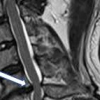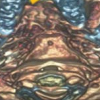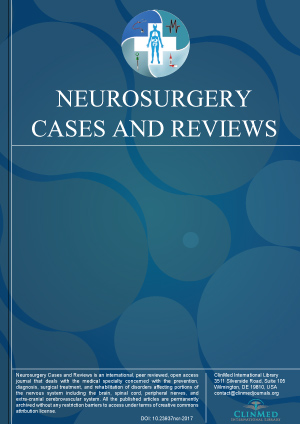Archive
Open Access DOI:10.23937/2643-4474/1710063
Xigong Li, Weiyi Diao, Shuo Wang, Dongdong Yu, Junsong Wu and Yuzhu Zhang
Article Type: Case Report and Literature Review | First Published: March 31, 2021
Article Formats
- Full Article
- XML
- EPub Reader
Open Access DOI:10.23937/2643-4474/1710062
'Talk and Die' with Potential Medicolegal Issue: A Case and Literature Review
Masanori Kurimoto, MD and Hiromichi Yamamoto, MD
Article Type: Case Report and Literature Review | First Published: March 05, 2021
Article Formats
- Full Article
- XML
- EPub Reader
Open Access DOI:10.23937/2643-4474/1710060
Cerebellar Hemorrhage Revealing a Community Acquired Bacterial Meningitis: A Rare Complication
Rida Touab, MD, Mohammed Rabii Andaloussi, MD, Khalil Mounir, PhD, Mustapha Bensghir, PhD and Hicham Belkhi, PhD
Article Type: Case Report | First Published: February 28, 2021
Article Formats
- Full Article
- XML
- EPub Reader
Open Access DOI:10.23937/2643-4474/1710061
COVID-19 Associated with Severe Intracranial Hemorrhage in Previously Healthy Patients
Ioan Alexandru FLORIAN, Magdalena BALACI, Teodora Larisa TIMIȘ, Cristina Caterina ALDEA, Laura MUREȘAN, Oana Maria RADU and Ioan Stefan FLORIAN
Article Type: Case Report | First Published: February 27, 2021
Article Formats
- Full Article
- XML
- EPub Reader
Open Access DOI:10.23937/2643-4474/1710059
Anne-Laure Hermann, MD, Christine Bulteau, MD, PhD, Marc Polivka, MD and Augustin Lecler, MD, PhD
Article Type: Case Report | First Published: February 19, 2021
Article Formats
- Full Article
- XML
- EPub Reader
Open Access DOI:10.23937/2643-4474/1710058
An Infant with Posterior Fossa Hemangioma with Aortic Stenosis: Case Report and Review of Literature
Senol Yigit Can, MD, Daglioglu Ergun, MD, Aydogdu Basaran Ozge, MD and Belen Deni, MD
Article Type: Case Report | First Published: February 19, 2021
Article Formats
- Full Article
- XML
- EPub Reader
Open Access DOI:10.23937/2643-4474/1710057
Non-Traumatic Intracranial Hemorrhage in Adolescent
Joana Vanessa Soares Silva, Benedita Sousa Amaral Bianchi de Aguiar, Eduardo Miguel Pereira da Costa, António Adriano Gonçalves Vilarinho, Josué Augusto de Carvalho Pereira and Magalys Sotto Gómez Pereira
Article Type: Case Report | First Published: February 15, 2021
Article Formats
- Full Article
- XML
- EPub Reader
Open Access DOI:10.23937/2643-4474/1710056
Cervical Spondylotic Myelopathy: An Updated Review
George P Lee, MD, Bhaveshkumar Ahir, PhD, Nauman Chaudhry, MD and Herbert H Engelhard, MD, PhD
Article Type: Review Article | First Published: January 23, 2021
 Cervical spondylotic myelopathy (CSM) is a common cause of spinal cord dysfunction. The degenerative disease can cause serious neurological symptoms that can significantly affect the quality of life. The heterogenous presentation of CSM and a lack of a single comprehensive outcome instrument can make the management of suspected CSM very difficult. Despite the advances in surgical techniques to treat CSM, the indications to do surgery remain controversial, particularly in older individuals who co...
Cervical spondylotic myelopathy (CSM) is a common cause of spinal cord dysfunction. The degenerative disease can cause serious neurological symptoms that can significantly affect the quality of life. The heterogenous presentation of CSM and a lack of a single comprehensive outcome instrument can make the management of suspected CSM very difficult. Despite the advances in surgical techniques to treat CSM, the indications to do surgery remain controversial, particularly in older individuals who co...
Article Formats
- Full Article
- XML
- EPub Reader
Open Access DOI:10.23937/2643-4474/1710055
Primary Intramedullary Frontal Bone Osteoblastoma: A Case Report
Senai Goitom Sereke, MBChB, MMed (Radiology) and Felix Bongomin, MBChB, MSc
Article Type: Case Report | First Published: January 16, 2021
 Osteoblastoma is a rare osteoid tissue forming tumor commonly affecting the posterior element of the spine. Intramedullary osteoblastoma of the calvarium is extremely rare. Osteoblastoma rarely occurs in the first decade of life. In this report we describe osteoblastoma of a very uncommon location in an 8-years-old male. An 8-year-old male presented with a 2-year history of progressive painless swelling of the left forehead. There was no prior history of trauma to the head. Head computed tomogra...
Osteoblastoma is a rare osteoid tissue forming tumor commonly affecting the posterior element of the spine. Intramedullary osteoblastoma of the calvarium is extremely rare. Osteoblastoma rarely occurs in the first decade of life. In this report we describe osteoblastoma of a very uncommon location in an 8-years-old male. An 8-year-old male presented with a 2-year history of progressive painless swelling of the left forehead. There was no prior history of trauma to the head. Head computed tomogra...
Article Formats
- Full Article
- XML
- EPub Reader

Volume 4
Issue 1
Issue 1
